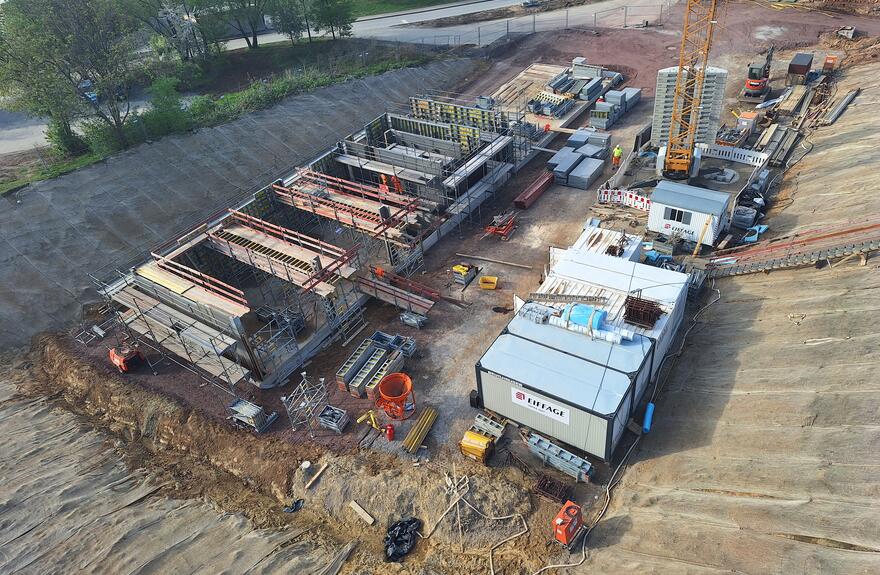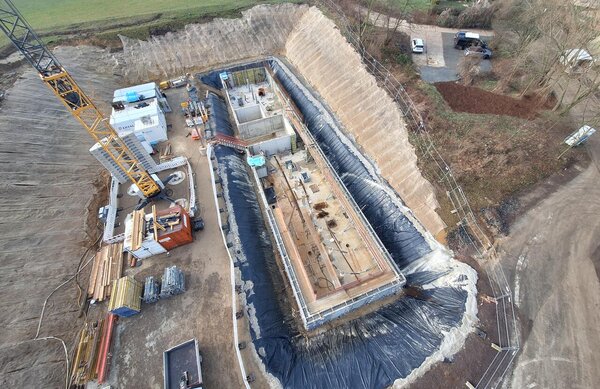Eiffage Infra-Ost GmbH has won two public tenders - civil engineering and media development - for the construction of a heat pump structure on the TU Dresden campus. The structural engineering department is constructing an underground rainwater retention basin with a technical building above and bicycle parking facilities. The Road Construction and Civil Engineering department is responsible for the development work for district and local heating, drinking water, waste water and electricity.
The basement of the technical building will be used as a rainwater retention basin. The in-situ concrete structure will be constructed using the waterproof method. On the ground floor, the northern section is constructed from steel columns and a cast-in-place concrete ceiling and serves as a bicycle and rubbish collection area for the TU Dresden. The southern section will have reinforced concrete walls for the spatial separation of the subsequent technical building services installations on the heat pumps.
The special feature: The surplus waste heat from the TU Dresden's high-performance computer will in future be processed by the three new heat pumps so that it can be utilised in the district heating network. The project is part of the city of Dresden's "Green Heat" sustainability initiative.
The new system can generate up to 24,000 megawatt hours of green heat - a quantity of heat that can supply 3,700 average Dresden households. This means that the data centre no longer needs to be recooled, particularly in the summer months, as the waste heat can be fed into the grid and reused as useful heat in households. Some of the heat generated is already being used to heat neighbouring university buildings in the winter months.
The reduction inCO2 emissions due to the avoided re-cooling amounts to over 100 tonnes per year. By feeding the surplus heat into the district heating network, a further 2,700 tonnes ofCO2 are avoided, which would otherwise have been produced during the generation of district heating.
The main services include
- 2,990m3 of excavated soil incl. disposal
- 130m3 floor slab concrete
- 550m2 reinforced concrete wall
- 355m2 filigree ceiling
- 405m2 reinforced concrete ceiling
- 60m2 brickwork
- 110m prefabricated attic


 DE
DE
 SWE
SWE


